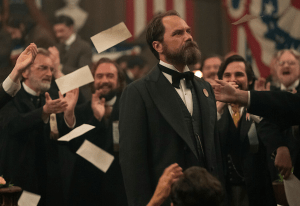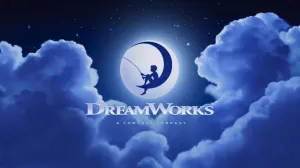Sometimes, ideas are just floating out there in the wind, and everyone latches onto them. Where they came from, I can’t tell you.
Videos by ComicBook.com
They’re just … there.
Last week, two podcasts I listen to (and have been a guest on in the past, come to think of it) — iFanboy and SuperContext — devoted entire shows to the first year of “Planetary.”
Yes, the now-classic Warren Ellis/John Cassaday/Laura Martin series is getting a second look all of a sudden for whatever reason.
I don’t question these glorious things. I just jump on board and have fun.
Here, then, are some thoughts on “Planetary” #1.

The Rise of Warren Ellis
Warren Ellis was a young up-and-coming writer I first met on the CompuServe Comics and Animation Forum in the mid-’90s somewhere. He promoted his upcoming run on the WildStorm series “Stormwatch” there, and so I gave it a chance.
I was an instant fan. I followed him from there to DV8 and “Tales of the Witchblade” and then his own book, “Transmetropolitan,” drawn by that guy from post-Mark Bagley “New Warriors” and the end of the Giffen-era of JLA, Darick Robertson.
Stormwatch led to The Authority, and around the same time, it led to “Planetary.”
Think about that — Warren Ellis was writing “The Authority,” “Planetary,” and “Transmetropolitan” at the same time.
That’s a ridiculously good bit of career-boosting productivity right there. Almost twenty years later and they’re all still in print, highly recommended, and as relevant as ever, if not more so.
But let me restrain myself for a second and just focus on “Planetary” #1.
The First One
This is the series set up, with a small story told in flashbacks in the middle of it all. This is the issue where Warren Ellis and John Cassaday get the gang together, to coin an old cliche.
Elijah Snow is living in the middle of the desert, drinking horrible coffee at the local diner and being miserable.

That’s when Jakita Wagner walks in the door and offers him a spot on the Planetary team. Snow instantly becomes our point of view character into the strange mysterious world of Planetary, a three person team of pop culture archaeologists (or “anthropologists”?) who investigate all sorts of crazy stuff with the help of an unlimited budget from a super wealthy but unknown and unseen leader.
Reading this back now, having read the entire series, it’s fun to see all the clues Ellis drops in this first issue that lead the way to so much of the series yet to come. Some of it is just throwaway lines, but some of it is the introduction of a whole lot of characters at the start, who team up to kill the Justice League.
Now THAT’S a first issue!
The Creators
People occasionally complain that Warren Ellis writes “Warren Ellis characters.” You know the type: quick with a one-liner, sarcastic, cigarette-smoking, cool people often in suits. Sometimes, they’re also British.
Fine by me. I’ll take all of those characters. They work so well because Ellis can write them authoritatively, and he gets a chance to put two of them in this book in Elijah Snow and Jakita. (Drummer gets a couple lines in, but he’s not in the same mold.)
Putting Snow and Wagner together in a panel is a sure sign of fireworks soon to come. Two people with minds as sharp as theirs are bound to butt heads, or at least trade one-liners. It’s magic every time it happens, usually coming from their differences: Snow is a grizzled old man. Wagner is younger and, though experienced in her adventures, she’s also excited by every twist and turn they come up against.
Some comic book creators rely on the memorable visual, the splash fight scene, or that cool trademark pose. Ellis does all of that, but can cap it off with a great one-liner on top of all that. They’re not forced gags. It’s more like the most succinct character-based reaction to a moment. It’s just cool.
As is the JLA analogues in the issue, which Ellis and Cassaday kill the entirety of in the first issue flashback.

This might be heretical for some, but I think this first half of “Planetary” is John Cassaday’s strongest work. I haven’t been a fan of much of the stuff he’s done in recent years since becoming a cover artist. In fact, I’d say that somewhere along the line of the second half of his X-Men run with Joss Whedon is where things took a bad turn, to my tastes. His “Star Wars” issues were a pretty close return to form, though there were clunky panels here and there, too. Maybe he should return to serialized comics more often to sharpen those skills.
But here, in this book, that oft-imitated cinematic storytelling is at its peak. It feels good. It works for the story. Everything comes together. It’s often paired up with Bryan Hitch’s art, just because it came out at the same time as Hitch’s run on “The Authority.” Cassaday doesn’t throw in all the tremendous detail and chaos, but he tells his story in a similar, very cinematic way. He’s just a lot more reserved and a little more focused. Hitch’s work of the time was a high budget blockbuster, where Cassaday’s was more controlled and more focused. It had great visual impact through very careful composition.
Worth Re-Reading?

Yes this series is worth a re-read, and I think I’m going to continue on from here. I have both Absolute editions, so it’ll be a good looking read. I may have to dig up my copies of the crossover books, or just download them from Comixology, but it’ll be worth it.
PipelineComics.com|| Twitter || Instagram || E-mail || YouTube








